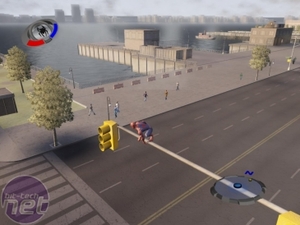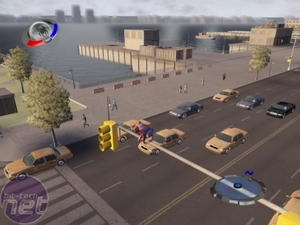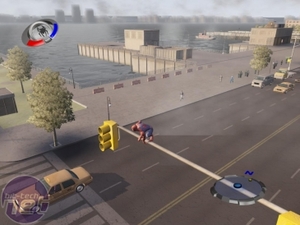Surface detail
The last detail slider available is the surface quality selector. At a guess we would have thought it'd put more cracks on the pavement and make the grass seem a little greener, but our testing proved this wasn’t quite the case.Instead, the surface detail slider effects the quality of the textures used on the more distant environmental objects, like buildings and... well, buildings is pretty much all there is actually.
There are the three usual settings for surface detail; low, medium and high.
Low / Medium
The low setting obviously gives the best performance but the lowest quality. Taking a look at the two screenshots makes the changes perceptible, though the difference is hard to spot. Instead of affecting the close-up textures like the pavement and the grass, the surface detail setting effects the further away textures of the buildings. The low setting gives the building on the waterfront a very flat and blockish look while the medium setting makes the windows appear recessed a little.It’s not a great improvement and the building still doesn’t look fantastic, but if you can spare the power from your GPU to deal with the increased textures then it makes sense to scale up.
Medium / High
Pushing the dial up to full doesn’t seem to make a dramatic difference to the textures and the distant buildings on the waterfront have the same appearance as last time. We’d recommend leaving the surface detail slider at medium, though if you’ve got the extra power then there’s no reason not to push it to the max just in case there is a difference we can’t spot.
MSI MPG Velox 100R Chassis Review
October 14 2021 | 15:04













Want to comment? Please log in.